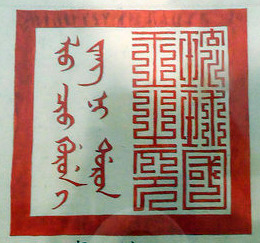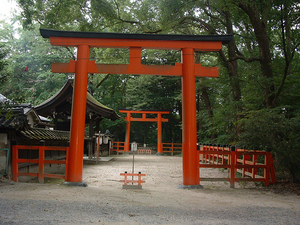Vermillion

- Japanese: 朱 (shu)
Vermillion is a red or orangish-red pigment used extensively in Japan in personal seals, as well as in the painting of Shinto shrines, Yoshiwara teahouses, torii gates, and other types of buildings. In addition to these architectural uses, and in seals in general, vermillion was also prominently used in the shuinjô, or "red seal certificates," authorizing red seal ship (shuinsen) merchants to trade overseas in the late 16th to early 17th centuries, and in vermillion-colored wrappers for silver currency in the Edo period, known as shuhô-gin.
The pigment is derived from cinnabar, a kind of mercury ore. It was originally chiefly imported from China, Ryûkyû, and Southeast Asia, but began to be produced domestically in significant amounts in the Edo period.
The shuza, or Cinnabar Guild, was one of the earliest za established in the Edo period, holding a monopoly on the import and distribution of the material. The guild was originally established in 1609, in conjunction with the invasion of the Ryûkyû Kingdom by Satsuma han; at that time, Ryûkyû, along with Chinese merchants at Nagasaki, were the exclusive source of cinnabar coming into Japan.
Japan eventually developed its own domestic sources of the material, and the shuza, which had previously focused exclusively on imports, now took over the domestic cinnabar industry as well, as it developed. The shogunate confirmed the shuza in its authority over the sale and distribution of the material in 1738, and again in 1759; under Tanuma Okitsugu, efforts were made by the shogunate to strengthen the guild's control of this business, cracking down on illegal sales by those outside of the guild in 1777 and 1782.
References
- John Whitney Hall, Tanuma Okitsugu (1719-1788): Forerunner of Modern Japan, Harvard University Press (1955), 77.
